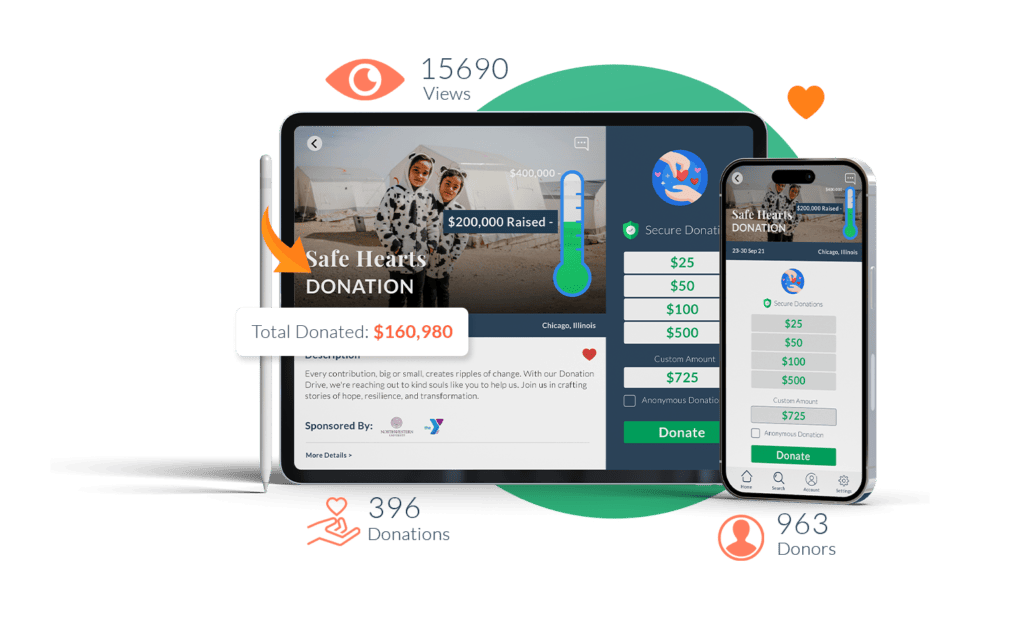
Your board governs your organization: its leadership determines your direction for years at a time. Responsible for budgets, organizational shifts, and actualizing major growth, your board is an integral part of your mission. Naturally, you want each new board member to have a solid understanding of your organization’s history, goals, and values.
In this article, we’ll discuss the importance of a new board member orientation and provide tips for creating an effective orientation program for your nonprofit organization.
Why Is a New Board Member Orientation Important?
A new board member orientation is a crucial step in ensuring that new members are equipped with the knowledge and resources they need to effectively contribute to the organization.
The board governs the direction of the nonprofit organization. Each member needs to be prepared to help make important financial decisions, file annual reports, and decide on the direction of the organization. Your future depends on your board members: they should be prepared with all the information they’ll need to make informed decisions.
Understanding the Organization’s Mission and Values
A new board member orientation is an opportunity for new members to learn about the organization’s mission and values. This is important because it helps them understand the purpose of the organization and how their role as a board member contributes to its overall goals.
Clarifying Roles and Responsibilities
A new board member orientation also clarifies the roles and responsibilities of board members. This is important because it sets expectations and helps new members understand what is expected of them. It also helps them understand the different committees and their roles within the organization.
Building Relationships and Teamwork
A new board member orientation is a great opportunity for new members to meet and build relationships with other board members. This is important because it helps foster teamwork and collaboration, which is essential for a successful board.
Tips for Creating an Effective New Board Member Orientation
Now that we understand the importance of a new board member orientation, let’s discuss some tips for creating an effective orientation program for your nonprofit organization.
To a certain degree, your interview process for board members should make them pretty familiar with your organization, its mission, and your expectations for them in their role. But formally reviewing these and other important information are important steps to success.
Start with a Welcome Packet
A welcome packet is a great way to introduce new board members to the organization. It should include information about the organization’s mission, values, and goals, as well as the board’s roles and responsibilities. You can also include a welcome letter from the board chair or executive director, a list of current board members or staff organizational chart, and any other relevant information.
Provide an Overview of the Organization
During the orientation, provide an overview of the organization, including its history, mission, and current programs and initiatives. This will help new members understand the organization’s purpose and how it operates.
Review the Board’s Roles and Responsibilities
It’s important to review the roles and responsibilities of board members during the orientation. This includes their legal and fiduciary duties, as well as their responsibilities in terms of fundraising, governance, and strategic planning.
Introduce Key Staff Members
Introduce new board members to key staff members, including the executive director, program directors, and other staff members. This will help new members understand the organization’s structure and who to go to for different types of information.
You’ll want to make sure that these and other important introductions don’t happen at a regular board meeting. Set aside time for everyone to meet and engage with the new board member outside of the time you need to discuss business. This will help your new member feel comfortable and give everyone a chance to connect.
Provide an Overview of Committees
Many nonprofit boards have committees that focus on specific areas, such as finance, fundraising, and governance. During the orientation, provide an overview of each committee and its purpose. This will help new members understand the different areas of focus and how they can get involved.
Discuss the Board’s Meeting Schedule and Expectations
It’s important to discuss the board’s meeting schedule and expectations during the orientation. This includes the frequency of meetings, how they are conducted, and any expectations for attendance and participation.
You may even want to create a formal board member conduct agreement, to ensure that everyone is on the same page about expectations. This will help new members understand their commitment to the board and how they can contribute to meetings.
Review the Organization’s Bylaws and Policies
The bylaws and policies of a nonprofit organization outline its rules and regulations. It’s important for new board members to review these documents during the orientation so they understand the organization’s structure and procedures.
Provide Training and Resources
During the orientation, provide training and resources to help new board members understand their roles and responsibilities. This can include training on fundraising, governance, and strategic planning, as well as resources such as board manuals and handbooks.
Encourage Questions and Feedback
Encourage new board members to ask questions and provide feedback during the orientation. This will help them feel more comfortable and engaged in the organization, and it will also provide valuable insights for improving the orientation program in the future.
One great way to ensure that a board member settles in successfully is to provide them with a buddy, ideally another board member. You can choose someone you feel shares a background or common interests with the new board member as opposed to a board member they’ll be working closely with. This gives the new board member someone to consult with questions they may not want to present to everyone, or to more senior members.
Who Is Responsible for the New Board Member Orientation?
The responsibility for the new board member orientation typically falls on the board chair, executive director, or a designated board member. This person should be knowledgeable about the organization and its operations, and should be able to effectively communicate the organization’s mission, values, and goals.
Takeaways
A new board member orientation is an essential step in ensuring that new members are equipped with the knowledge and resources they need to contribute to the organization. By providing an overview of the organization, clarifying roles and responsibilities, and building relationships, you can set new board members up for success and help them make a meaningful impact on your nonprofit organization.






